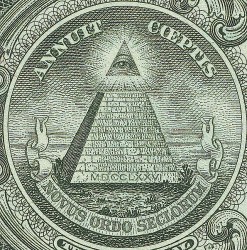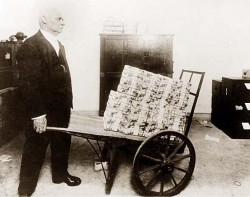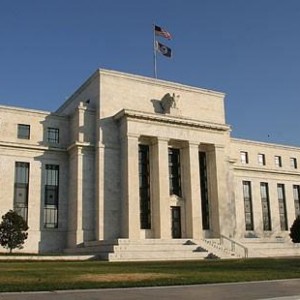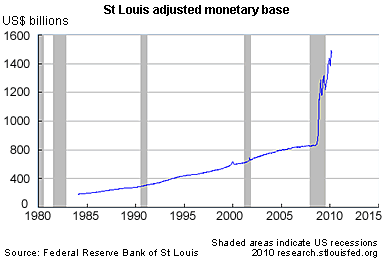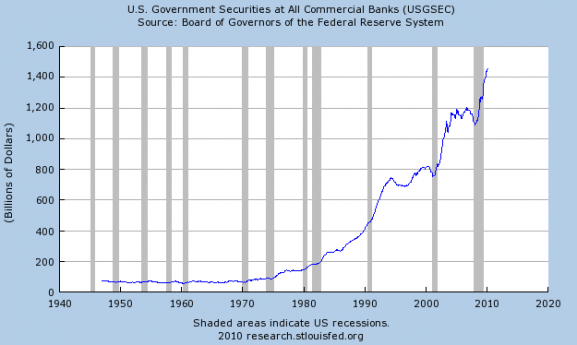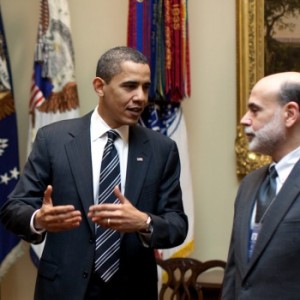 Federal Reserve Chairman Ben Bernanke is on the way out the door, but the consequences of the bond bubble that he has helped to create will stay with us for a very, very long time. During Bernanke’s tenure, interest rates on U.S. Treasuries have fallen to record lows. This has enabled the U.S. government to pile up an extraordinary amount of debt. During his tenure we have also seen mortgage rates fall to record lows. All of this has helped to spur economic activity in the short-term, but what happens when interest rates start going back to normal? If the average rate of interest on U.S. government debt rises to just 6 percent, the U.S. government will suddenly be paying out a trillion dollars a year just in interest on the national debt. And remember, there have been times in the past when the average rate of interest on U.S. government debt has been much higher than that. In addition, when the U.S. government starts having to pay more to borrow money so will everyone else. What will that do to home sales and car sales? And of course we all remember what happened to adjustable rate mortgages when interest rates started to rise just prior to the last recession. We have gotten ourselves into a position where the U.S. economy simply cannot afford for interest rates to go up. We have become addicted to the cheap money made available by a grossly distorted financial system, and we have Ben Bernanke to thank for that. The Federal Reserve is at the very heart of the economic problems that we are facing in America, and this time is certainly no exception.
Federal Reserve Chairman Ben Bernanke is on the way out the door, but the consequences of the bond bubble that he has helped to create will stay with us for a very, very long time. During Bernanke’s tenure, interest rates on U.S. Treasuries have fallen to record lows. This has enabled the U.S. government to pile up an extraordinary amount of debt. During his tenure we have also seen mortgage rates fall to record lows. All of this has helped to spur economic activity in the short-term, but what happens when interest rates start going back to normal? If the average rate of interest on U.S. government debt rises to just 6 percent, the U.S. government will suddenly be paying out a trillion dollars a year just in interest on the national debt. And remember, there have been times in the past when the average rate of interest on U.S. government debt has been much higher than that. In addition, when the U.S. government starts having to pay more to borrow money so will everyone else. What will that do to home sales and car sales? And of course we all remember what happened to adjustable rate mortgages when interest rates started to rise just prior to the last recession. We have gotten ourselves into a position where the U.S. economy simply cannot afford for interest rates to go up. We have become addicted to the cheap money made available by a grossly distorted financial system, and we have Ben Bernanke to thank for that. The Federal Reserve is at the very heart of the economic problems that we are facing in America, and this time is certainly no exception.
This week Barack Obama publicly praised Ben Bernanke and stated that Bernanke has “already stayed a lot longer than he wanted” as Chairman of the Federal Reserve. Bernanke’s term ends on January 31st, but many observers believe that he could leave even sooner than that. Bernanke appears to be tired of the job and eager to move on.
So who would replace him? Well, the mainstream media is making it sound like the appointment of Janet Yellen is already a forgone conclusion. She would be the first woman ever to chair the Federal Reserve, and her philosophy is that a little bit of inflation is good for an economy. It seems likely that she would continue to take us down the path that Bernanke has taken us.
But is it a fundamentally sound path? Keeping interest rates pressed to the floor and wildly printing money may be producing some positive results in the short-term, but the crazy bubble that this is creating will burst at some point. In fact, the director of financial stability for the Bank of England, Andy Haldane, recently admitted that the central bankers have “intentionally blown the biggest government bond bubble in history” and he warned about what might happen once it ends…
“If I were to single out what for me would be biggest risk to global financial stability right now it would be a disorderly reversion in the yields of government bonds globally.” he said. There had been “shades of that” in recent weeks as government bond yields have edged higher amid talk that central banks, particularly the US Federal Reserve, will start to reduce its stimulus.
“Let’s be clear. We’ve intentionally blown the biggest government bond bubble in history,” Haldane said. “We need to be vigilant to the consequences of that bubble deflating more quickly than [we] might otherwise have wanted.”
Posted below is a chart that demonstrates how interest rates on 10-year U.S. Treasury bonds have fallen over the last several decades. This has helped to fuel the false prosperity that we have been enjoying, but there is no way that the U.S. government should have been able to borrow money so cheaply. This bubble that we are living in now is setting the stage for a very, very painful adjustment…
So what will that “adjustment” look like?
The following analysis is from a recent article by Wolf Richter…
Ten-year Treasury notes have been kicked down from their historic pedestal last July when some poor souls, blinded by the Fed’s halo of omnipotence and benevolence, bought them at a minuscule yield of 1.3%. For them, it’s been an ice-cold shower ever since. As Treasuries dropped, yields meandered upward in fits and starts. After a five-week jump from 1.88% in early May, they hit 2.29% on Tuesday last week – they’ve retreated to 2.19% since then. Now investors are wondering out loud what would happen if ten-year Treasury yields were to return to more normal levels of 4% or even 5%, dragging other long-term interest rates with them. They know what would happen: carnage!
And according to Richter, there are already signs that the bond bubble is beginning to burst…
Wholesale dumping of Treasuries by exasperated foreigners has already commenced. Private foreigners dumped $30.8 billion in Treasuries in April, an all-time record. Official holders got rid of $23.7 billion in long-term Treasury debt, the highest since November 2008, and $30.1 billion in short-term debt. Sell, sell, sell!
Bond fund redemptions spoke of fear and loathing: in the week ended June 12, investors yanked $14.5 billion out of Treasury bond funds, the second highest ever, beating the prior second-highest-ever outflow of $12.5 billion of the week before. They were inferior only to the October 2008 massacre as chaos descended upon financial markets. $27 billion in two weeks!
In lockstep, average 30-year fixed-rate mortgage rates jumped from 3.59% in early May to 4.15% last week. The mortgage refinancing bubble, by which banks have creamed off billions in fees, is imploding – the index has plunged 36% since early May.
If interest rates start to climb significantly, that will have a dramatic affect on economic activity in the United States.
And we have seen this pattern before.
As Robert Wenzel noted in a recent article on the Economic Policy Journal, we saw interest rates rise suddenly just prior to the October 1987 stock market crash, and we also saw them rise substantially prior to the financial crisis of 2008…
As Federal Reserve chairman Paul Volcker left the Fed chairmanship in August 1987, the interest rate on the 10 year note climbed from 8.2% to 9.2% between June 1987 and September 1987. This was followed, of course by the October 1987 stock market crash.
As Federal Reserve chairman Alan Greenspan left the Fed chairmanship at the end of January 2006, the interest rate on the 10 year note climbed from 4.35% to 4.65%. It then climbed above 5%.
So keep a close eye on interest rates in the months ahead. If they start to rise significantly, that will be a red flag.
And it makes perfect sense why Bernanke is looking to hand over the reins of the Fed at this point. He can probably sense the carnage that is coming and he wants to get out of Dodge while he still can.

